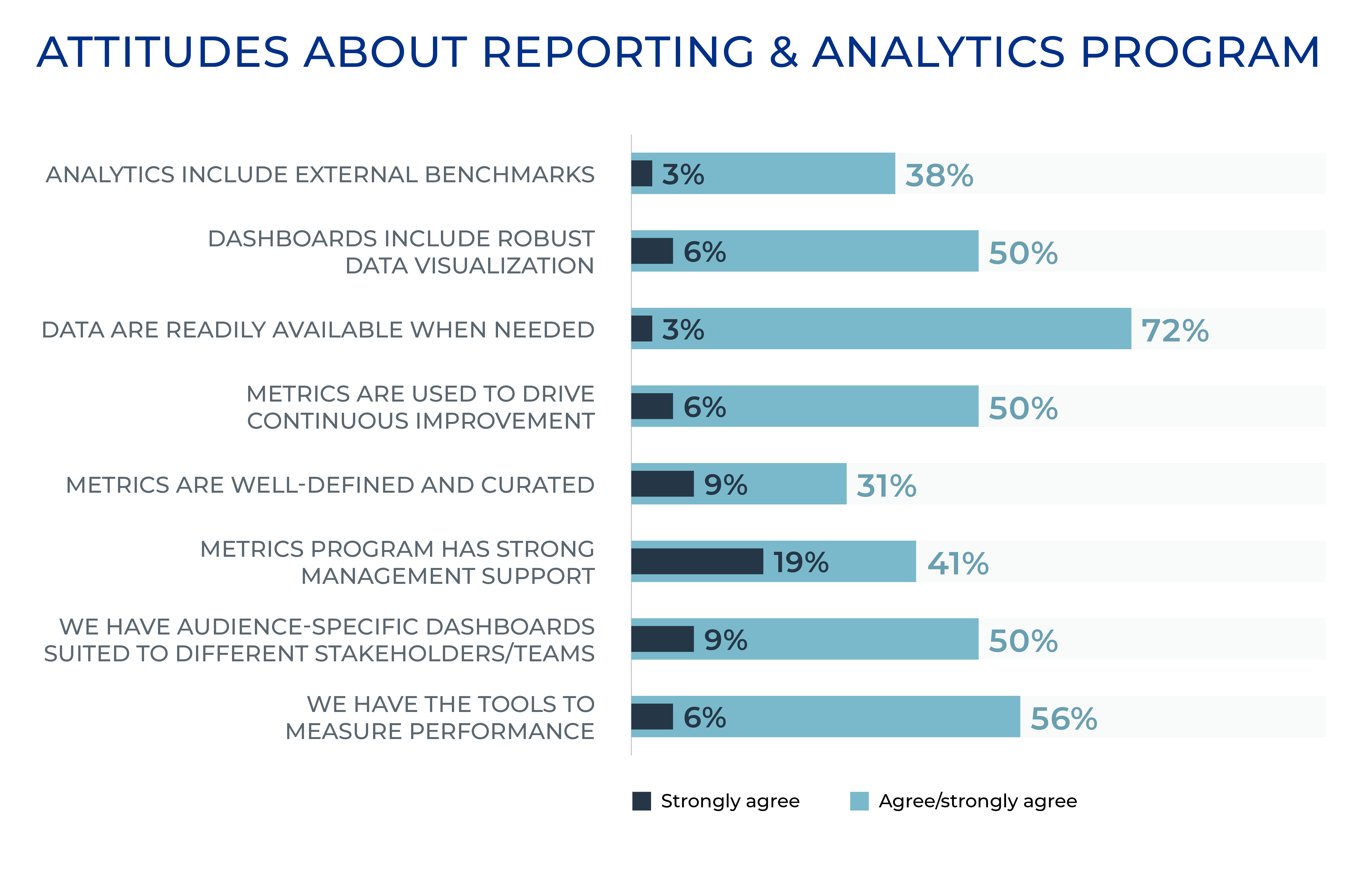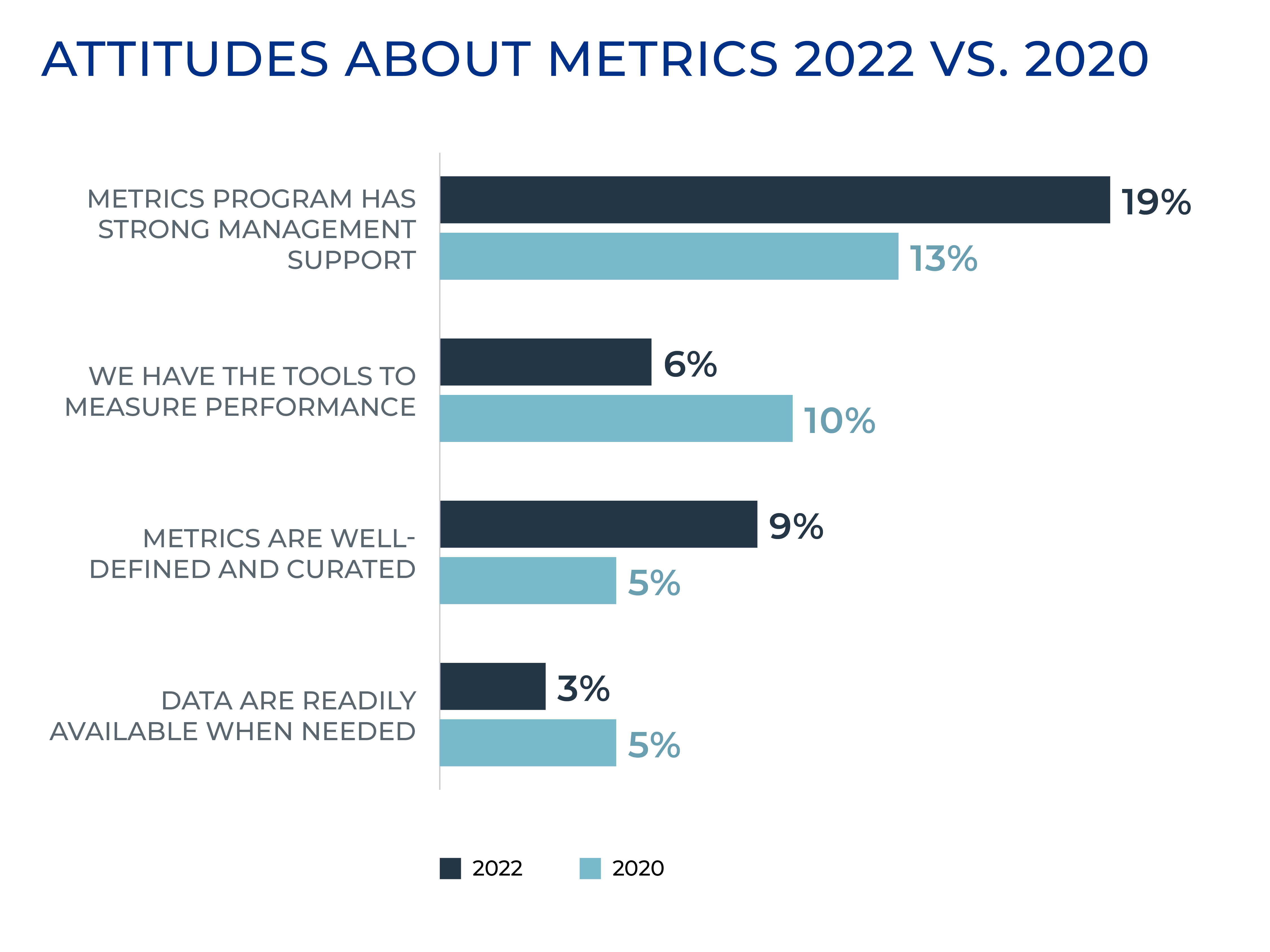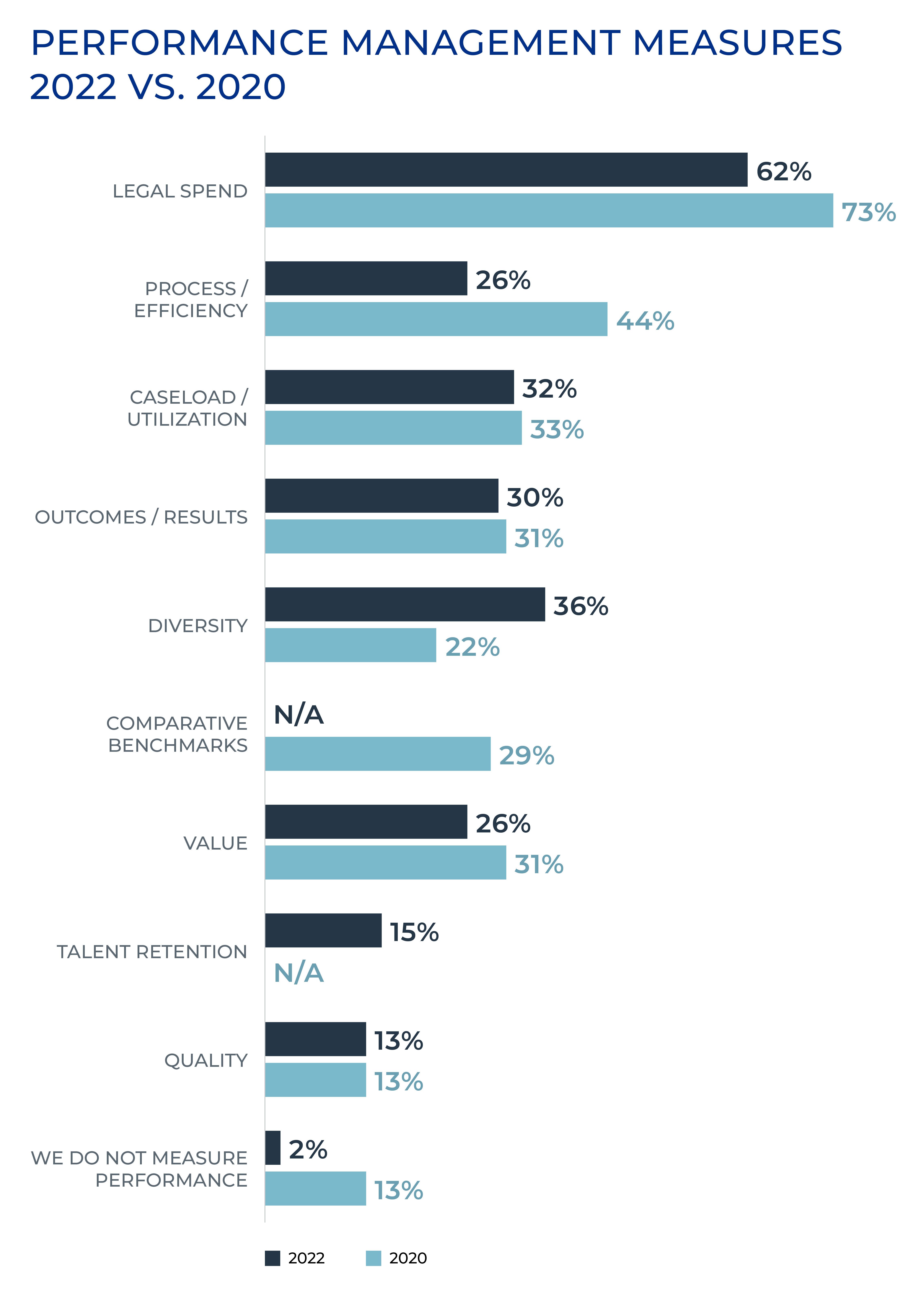
Legal Operations Benchmarking; Maturing Metrics & Analytics
The arc of maturation in Metrics and Analytics features is a progression from data gathering and cleansing to establishing core metrics, and eventually automating dashboards with well-balanced financial, operational and outcomes metrics that are accessed directly by key stakeholders. We see this reflected in the Hyperion Research 2022 Legal Operations Benchmarking study. Among those that have a Metrics and Analytics program (63%), nearly three-quarters say that data are readily available and 56% indicate they have the tools to measure performance, featured in the graph below.

While 72% of in-house legal executives report that their data is readily available, our yearly benchmarking shows that standards are rising for what is considered a valuable legal ops metrics program. From 2020 to 2022 we see a modest improvement in management support for metrics programs from 13% to 19% (trend in strong agreement shown below). What’s interesting is the extent to which respondents strongly agreed that their metrics are well-defined, up to only 9% from 5% in 2020. An abysmal 6% strongly agree that they have the tools to measure performance – which we see reflected in the high intent to invest in business intelligence and dashboarding tools covered previously in this series.
The disconnect between the wider availability of data and the slow increase in the confidence of metrics programs indicates that the bar keeps rising as legal operations teams implement and integrate systems to obtain more data, and collaborate with internal stakeholders to provide and continuously improve actionable metrics.

WHAT IS BEING MEASURED? LEGAL SPEND STILL TOPS THE LIST
When initiating a formal metrics and analytics program, the logical place to start is on legal spend because of the abundance of legal billing data, albeit typically in need of significant cleansing until data-entry practices are rigorous.
Not surprisingly, given the increased focus on diversity, equity and inclusion stimulated by the events of 2020, measurement of diversity has surged, with over a third of respondents now keeping tabs on diversity, up considerably from 22% in the spring 2020 benchmarking study. As an additional sign of the times, we added a new metric to the study this year – talent retention – and found 15% of participating legal departments include retention in their reporting.

Measurement of staff utilization and outcomes are holding steady. However, rates of measurement of efficiency, outcomes and value are not improving. These survey results point to ample room for continued growth in the maturity of metrics and analytics programs.
Advanced metrics and analytics programs underpin the strategic direction of the legal department and provide business intelligence driving continuous improvement in firm/vendor selection and performance, internal and external staffing, case assessment and legal strategy.
If you don’t know where you’re going it’s hard to get there. Clearly defined objectives and key results (OKRs) are the hallmarks of results-focused metrics programs.
In the next installment in this series on the Hyperion Research 2022 Legal Operations Benchmarking study, we will share results of our examination of the corporate legal operations function.
Looking for a Legal Department Performance Management Solution? Epiq’s Legal Metrics that Matter Program delivers a complete metrics and reporting program, including operational KPIs for measuring legal service quality and outcomes.


.png?width=240&height=195&name=Metrics%20that%20Matter_884x717%20(1).png)

